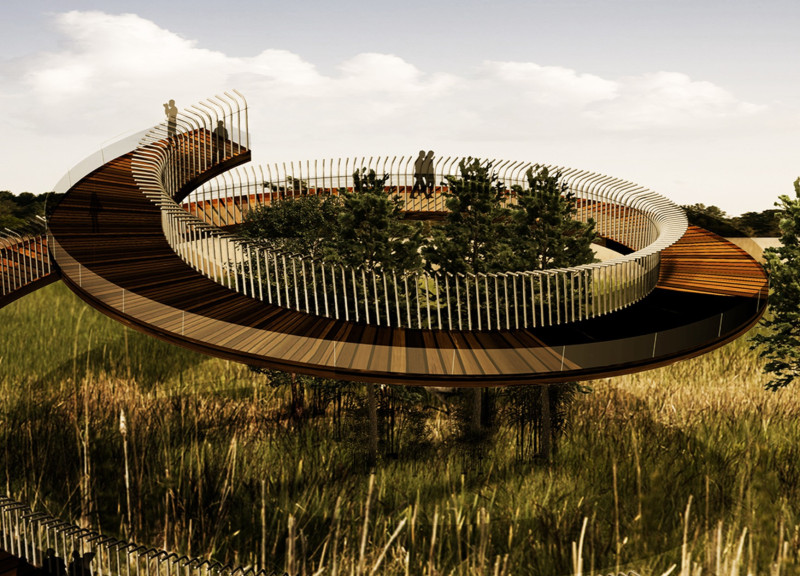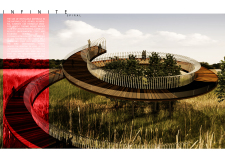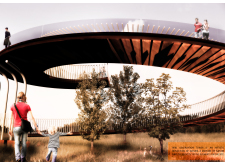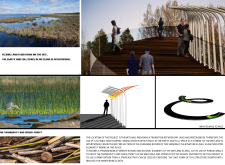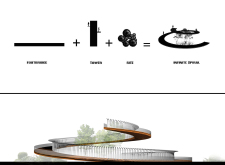5 key facts about this project
The design of the Infinite Spiral is characterized by its continuous, spiral form, which not only provides a visually appealing aspect but also encourages exploration. Visitors are invited to meander along the ramp-like pathways that lead to a spacious observation deck, offering expansive views of the wetland. This thoughtful arrangement emphasizes the importance of providing access to all individuals while ensuring safety and comfort.
In terms of materials, the project utilizes thermally modified wood, known for its durability and aesthetic qualities. This choice reflects a commitment to sustainability, as thermally modified wood reduces the need for chemical treatments and showcases a beautiful natural finish. Additionally, recyclable materials are incorporated throughout the structure, further underscoring a dedication to eco-friendliness. Glass panels are strategically placed in the design to allow natural light to stream into the space while maintaining safety and visibility.
Throughout the design, unique approaches stand out. The integration of porous walls facilitates airflow, allowing natural elements to flow through the structure. This design promotes a sense of connection with the environment and enhances the visitor experience as they interact with their surroundings. Moreover, the infinite spiral form serves as a symbolic representation of continuity and the cyclical nature of life, reflecting the project’s overarching theme of harmony with the ecosystem.
The Infinite Spiral project is not just a structural solution for observing birds; it acts as a community hub focused on education and awareness surrounding environmental conservation. The combination of architecture and nature fosters community engagement, making it an essential site for educational programs and local events. By offering a dedicated space for these activities, the project encourages individuals to explore and better understand their local ecosystem.
In summary, the Infinite Spiral is an exemplary project that showcases the potential for thoughtful architectural design in natural settings. Its innovative approach ensures functionality while promoting environmental respect and engagement. The project stands as an invitation for visitors to connect with the wetland and discover the life that thrives within it. For further exploration of the architectural plans, sections, and designs, readers are encouraged to delve deeper into the presentation of this compelling project.


